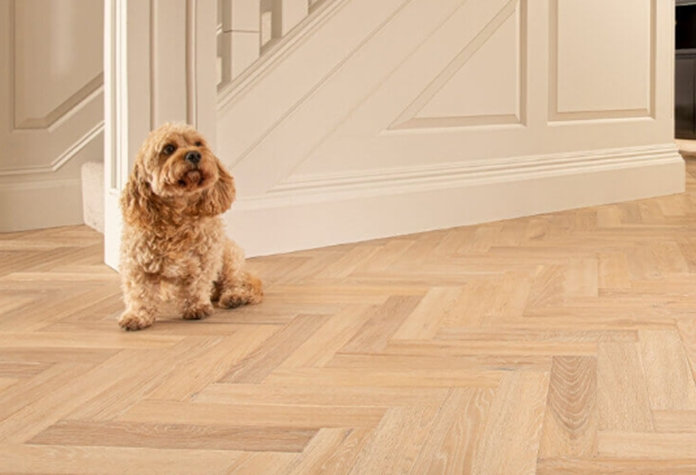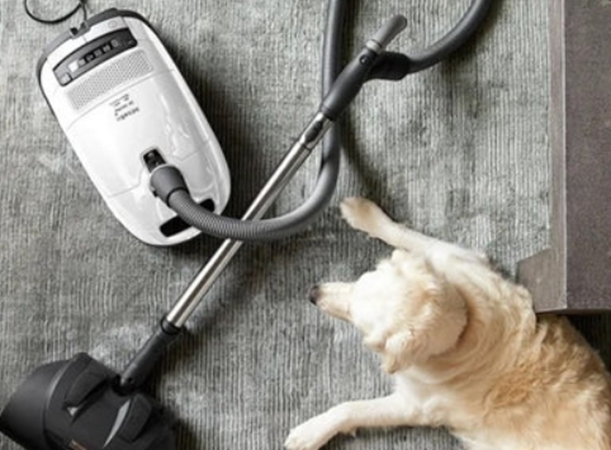Pets bring joy but also leave behind scratches, stains, and wear that challenge even the toughest floors. From claw marks to accidental spills, pet owners need flooring that combines durability with easy maintenance. The wrong choice can mean constant repairs or premature replacement, adding unnecessary stress and expense. In this article, we’ll explore the best pet-friendly plank flooring options, key features to prioritize, and practical maintenance tips to keep your floors looking new.

Top Pet-Friendly Flooring Materials Compared
Luxury Vinyl Plank (LVP)
Luxury vinyl plank (LVP) stands out as the top choice for pet owners due to its exceptional durability and waterproof properties. The wear layer resists scratches from claws, while the rigid core prevents moisture from seeping through, making it ideal for homes with frequent accidents. Unlike traditional materials, LVP mimics the look of wood or stone without the maintenance hassles. Its textured surface also provides better traction, reducing the risk of pets slipping. Cleaning is effortless—just a quick sweep and occasional mopping with a mild solution. Many LVP options also come with attached underlayment, reducing noise from running paws.
Laminate
Laminate flooring is a budget-friendly alternative that offers decent scratch resistance, but it falls short in moisture protection. While newer models include water-resistant coatings, prolonged exposure to spills or pet accidents can cause swelling at the seams. The hard surface does withstand claws better than solid hardwood, but it lacks the flexibility of LVP. Laminate’s photographic layer can convincingly replicate wood, though heavy wear may reveal the core material over time. For pet owners on a tight budget, laminate can work if paired with area rugs in high-moisture zones. However, it’s not the best long-term solution for homes with puppies or pets prone to accidents.
Engineered Hardwood
Engineered hardwood offers a more natural aesthetic compared to synthetic options, making it appealing for style-conscious pet owners. Its layered construction provides better stability than solid wood, reducing warping from humidity. However, the top veneer can still scratch, especially with larger or active pets. Opting for a matte or wire-brushed finish helps mask minor imperfections. While not fully waterproof, higher-quality engineered wood can handle occasional spills if cleaned promptly. This material works best for low-to-medium traffic areas and pet owners willing to perform regular maintenance. Avoid glossy finishes, as they highlight scratches and paw prints more easily.
Must-Have Features for Pet-Friendly Floors
When selecting flooring for pets, prioritize scratch resistance, waterproofing, and ease of cleaning. A thick wear layer (at least 12 mil for LVP) ensures long-term durability against claws. Waterproof cores prevent damage from spills or accidents, a must for puppies or older pets. Textured surfaces not only enhance grip but also hide scratches better than smooth finishes. Noise reduction is another key factor—look for flooring with built-in underlayment to dampen the sound of paws. Finally, choose low-maintenance materials that don’t require waxing or refinishing. A balance of these features ensures your floors stay functional and attractive despite daily pet activity.
Flooring to Avoid with Pets
Solid hardwood, while beautiful, is highly susceptible to scratches and water damage, making it a poor match for pets. Cheap laminate tends to warp quickly when exposed to moisture, and its thin wear layer shows scratches easily. High-gloss finishes, whether on vinyl or hardwood, highlight every paw print and scuff, requiring constant cleaning. Cork and bamboo, though eco-friendly, lack the hardness needed to withstand active pets. Carpet traps odors, stains, and pet hair, creating hygiene challenges. If you love the look of wood but have pets, opt for LVP or engineered hardwood instead of these problematic materials.
Installation & Maintenance Tips
Proper Underlayment for Noise Reduction
A quality underlayment is crucial for minimizing the clicking sounds of pet nails on hard floors. It also adds cushioning, making the surface more comfortable for pets to walk or lie on. For LVP, many products come with pre-attached padding, but adding an extra layer can further enhance noise reduction. Rubber or foam underlayment works well for laminate and engineered wood, providing both sound absorption and moisture barriers. Proper installation ensures seams stay tight, preventing liquids from seeping through. If you have large dogs, consider thicker underlayment to reduce impact noise.
Easy-Clean Solutions for Pet Hair & Mud
Regular sweeping or vacuuming prevents dirt and pet hair from grinding into the floor’s surface. Microfiber mops work best for daily cleaning, as they trap hair without scratching. For muddy paw prints, a damp cloth with a mild cleaner quickly removes residue without damaging the floor. Avoid harsh chemicals, especially on LVP, as they can strip the protective coating. Place washable mats near entryways to catch dirt before it spreads. For deeper cleaning, use a steam mop (only on waterproof floors) or a pH-neutral cleaner.

Conclusion
Choosing the right flooring for pets doesn’t mean sacrificing aesthetics for durability. Luxury vinyl plank offers the best combination of scratch resistance, waterproofing, and easy maintenance, while laminate and engineered wood provide budget or natural alternatives. Avoid materials that can’t withstand moisture or claws, and invest in proper underlayment for noise control. For daily care, knowing how to clean vinyl plank flooring efficiently keeps it looking new—products like those from eufy make the process effortless with pet-friendly cleaning solutions. With the right choice, your floors can handle pets while maintaining a stylish, welcoming home.